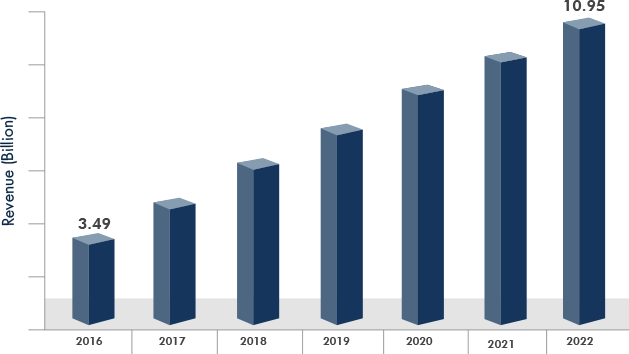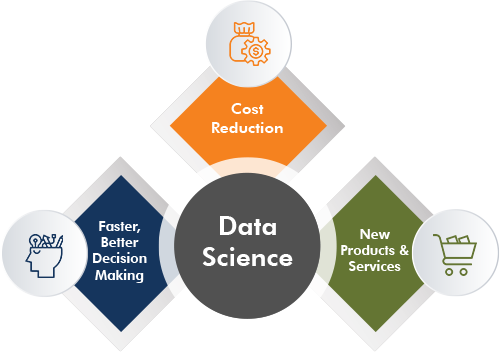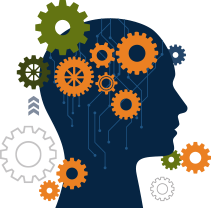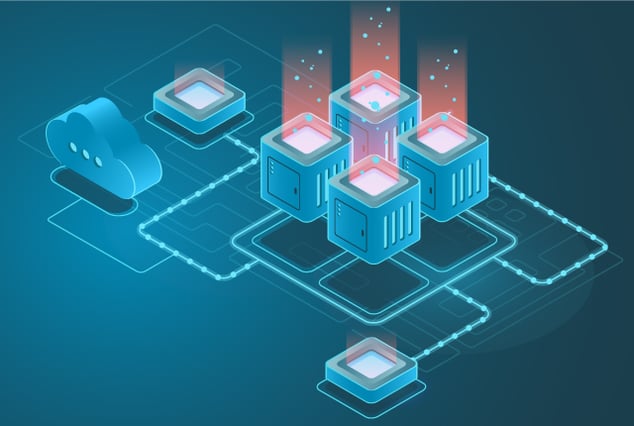In this expert series, we bring you the concepts that help us to gain insight into Data Science and its trends, Data Science types, and Machine Learning Life cycle so that you can have a good understanding of it.
Data Science
In today’s hyperactive digital world, every organization accumulates volume of data from their operations, sales, web traffic, customer interactions, transactions and marketing.
‘Data science’ can help businesses to turn this raw data into actionable business insights and discover hidden patterns. These insights can be used to predict the demand for products/services, stop customer churn, prevent undesired incidents, spot frauds/risks, discover unexplored revenue streams, and improve the overall operation's efficiency.
Data science uses various data mining and extraction technologies, machine learning algorithms, and principles to predict outcomes and make decisions based on historical data.
For example, when Hurricane Frances was about to hit Florida, Walmart, with the help of its Data Science team, was able to analyze its historical data and patterns from the past hurricane situations. They discovered that during the times of a hurricane, sales of Pop-Tarts increased by 7 times than usual. Moreover, beer was another top-selling product during the pre-hurricane duration.
This helped the Walmart team to stock up and cater to the unusual local demand for these products and make good profits.
Reference: https://www.nytimes.com/2004/11/14/business/yourmoney/what-walmart-knows-about-customers-habits.html
Data Science Market Overview
Global Predictive Analytics Market Revenue, 2016 - 2022 (USD Billion)

Reference: https://www.zionmarketresearch.com/news/predictive-analytics-market
What Is Data Science?
Data Science is an amalgamation of Data engineering, Data analysis, Machine learning, and Business skills that allow extraction of meaningful and actionable insights from raw data to be used for business purposes.

How Are Predictions Made Using Data?
In order to solve a business problem or to automate a decision-making process, historical data is fed to a machine learning algorithm for training. Once a model is trained, it can predict the outcome for the new scenarios based on its learnings from the past data.
There are 2 types of major machine learning problems depending on the data:
Supervised Machine Learning
If the training data contains both the inputs and the desired outputs, i.e. if outcome of historical scenarios is defined, the Supervised Machine Learning algorithm can learn from the historical examples and predict the outcome for future scenarios. The training process continues until the model achieves a desired level of accuracy on the training data.
2 types of Supervised Machine Learning
Regression: When the outcome variable is continuous (numerical values).
For example: Predicting stock prices.
Algorithms: Regression Tree, Linear Regression, etc.
Classification: When the outcome variable is categorical.
For example: Predicting whether a borrower would repay the loan.
Algorithms: Classification Tree, Random Forest, KNN, Logistic Regression, etc.
Unsupervised Machine Learning
If the training data contains only inputs without any associated outcome, Unsupervised Machine Learning finds structure in the data, like grouping or clustering of data points to determine the data patterns on its own. Algorithms: DBSCAN, Clustering algorithms.
A Typical Data Science Life Cycle
Data Science Life Cycle
-
Understanding The Business Problem
-
Data Mining And Extraction
-
Data Cleaning
-
Data Wrangling
-
Data Preprocessing
-
Feature Engineering
-
Exploratory Data Analysis
-
Modeling
-
Optimization And Evaluation
-
Model Deployment
Data Science is an iterative process. As more data of better quality is available, the machine learning model is retrained to get more robust and enhance its prediction capabilities. Hence, system performance improves steadily.
Key Takeaways

- Data Analytics let us find causal relationships between different business parameters and discover hidden actionable insights
- Organizations can harness the power of information and intelligence to optimize business performance, revenue, and customer satisfaction
- Once trained over the available data, machine learning algorithm can predict outcomes and recommend optimal solutions for decisions making and business problems
Have Suggestions?
We would love to hear your feedback, questions, comments and suggestions. This will help us to make us better and more useful next time.
Share your thoughts and ideas at knowledgecenter@qasource.com



